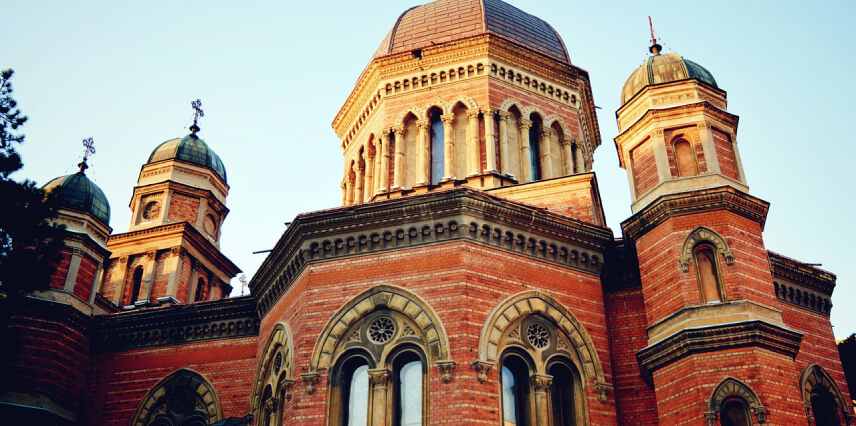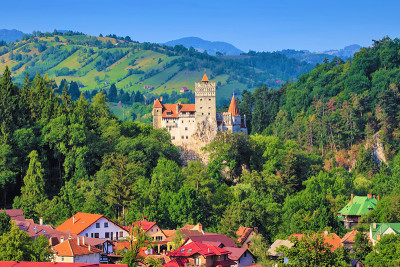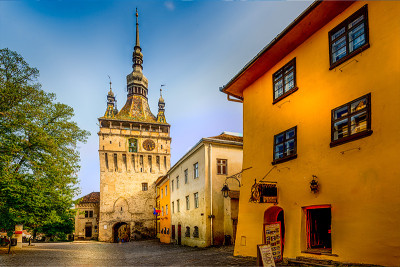Craiova
So, we will discuss about Oltenia! And how could we start the discussion about Oltenia, without mentioning first and foremost about its heart, Craiova? Craiova is the county seat of Dolj and, due to its cultural air and economic role, the city is nicknamed “the capital of Oltenia”.
It is the fifth city in Romania, as the number of inhabitants, having a population between 270,000 and 300,000 inhabitants. Craiova is an excellent place for long, quiet, uninterrupted strolls or stress because the city has what it looks like for the restless traveler: churches, but also historical buildings and boyar palaces, almost as numerous as in the country’s capital, Bucharest.
In the morning you can have breakfast in the center of the city, an gorgeous area, after which you can start the tour of the town by visiting the magnificent famous fountains that have been preserved since the 16th century in Craiova.
The Basarabestilor Fountain
The oldest fountain in the city retains its name from the renovation works to which it was subjected by order of Matei Basarab around 1650 when the spray was used to supply water for the entire area on the outskirts of the city. Today, the fountain is near the Craiova Racecourse, not far from the Unirii Road.
The Jianu Fountain
The Jianu fountain was built in the 18th century by a local boyar. The fountain, which is on the list of the most visited tourist attractions in Oltenia, is located in a green oasis near the house of the poet Macedonski. Legend says that the rich history to which its walls witnessed inspired the great poet.
Craiova Museum Art
Just a few minutes from the Baniei House and the Metropolitan Church of Craiova is the Craiova Art Museum, one of the largest museums of this type in Romania. Arranged in the building of an old and impressive palace, the museum contains a collection of international art with paintings from various schools of the seventeenth century.
The Baniei House
The Baniei House, located on Matei Basarab Street, is the oldest civil construction in the city. It is situated between famous churches and monuments and was built in the 15th century and rebuilt by Constantin Brancoveanu in 1699.
It was for a long time an administrative center of the locality, being transformed in 1933 into a museum. Currently, the Baniei House can be visited and is the host of numerous events or screenings of ethnographic films and other such activities.
Targu Jiu
About an hour and a half from Craiova is Targu Jiu, the city of Brancusi and the ideal place to leave for an odd number of tourist destinations of beauty and cultural value that honor the entire Oltenia.
The first stop is recommended to be done at a hotel or a pension, at your choice, to solve the problem of accommodation in Targu Jiu, because from here you can easily reach several tourist objectives that could occupy a whole week, not just a weekend.
As you probably know or have learned, Targu Jiu became very well known, not only in Romania but also abroad, thanks to Constantin Brancusi’s sculptures. You can start the tour of Targu Jiu with its statues.
Brancusi Park
In Brancusi Park, you can admire the Kissing Gate and the Table of Silence, monuments that can be admired in the park dedicated to the great sculptor. Admission is free, and tourists can relax with a stroll in the promenade area and a few moments of rest in the green park that houses the monuments.
The Endless Column
The monument of the Endless Column is in the middle of a green field so that it can be admired from a distance in all its splendor. It was initially called the Endless Gratitude Column, has a height of almost 30 meters and is recognized as one of the wonders of the modern world.
Tismana Monastery
At 33 km from Targu Jiu, on one of the most picturesque mountain roads in the country that goes to Baile Herculane, Godeanu Pass and Cerna Valley, there is the locality of Tismana which houses the famous monastery of the same name.
Tismana Monastery is one of the most famous and visited monastic complexes in the whole of Romania. Constructed in an picturesque setting, the monastery has an architectural value as rich as its spiritual value. It resembles a fortress.
The ideal time for a visit is after 11 am and until 4:30 pm, between daily jobs, especially for tourists who are less interested in the spiritual side. To the south of the church built in the rock, you can visit the cave of Saint Nicodim, who is said to have been the founder of the monastery.
The Women’s Cave And Polovragi Cave
About one hour away from Sohodolului Gorges, there are two spectacular tourist objectives, called The Women’s Cave and Polovragi Cave. Located on Oltului Gorges, which is counted as the narrowest gorges in Romania, these two caves have been arranged touristically, and in specific periods they also have guided tours.
The Sohodolului Gorges
The Sohodolului Gorges are only 25 kilometers away from Tismana, which can be traveled in a couple of minutes by car. Tourists visiting Oltenia should not miss this area of exceptional beauty. Along with the sound of water accompanying the journey all the way, you can admire caves, caves, and tunnels dug by the clean water of the river.

 ES
ES
 IT
IT
 DE
DE
 FR
FR


